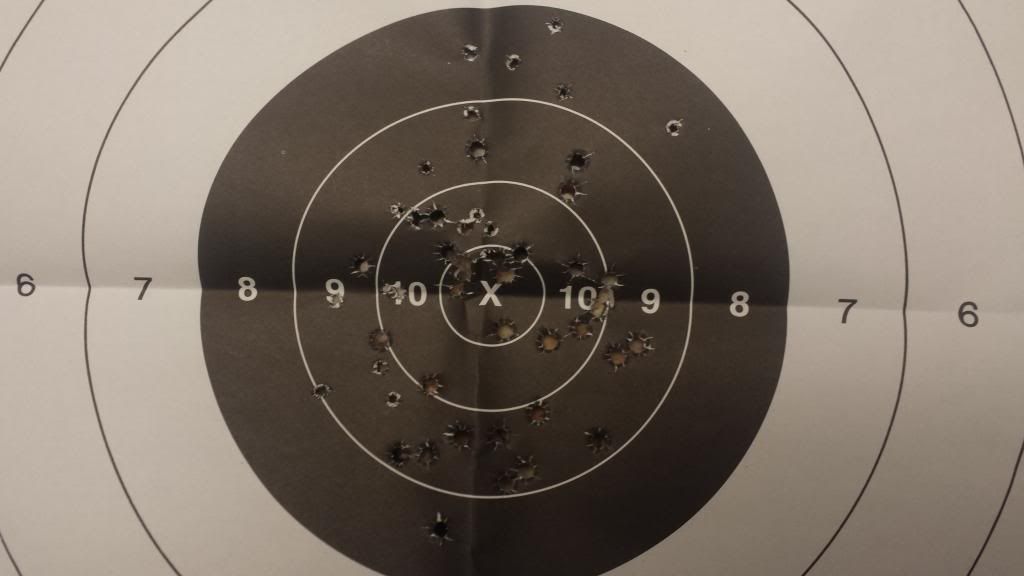Wwrhodes91
New member
Hello everyone,
I haven't shot handguns much in the last year or so due to price (and focusing on rifle), but I just got into reloading and I'm looking into doing some local IDPA matches. I went out to the range and shot 60 9mm (Didn't load any more since it was my first time loading 9mm and I didn't want to load much until I knew it worked) and about 200 .22 rounds. I tried to go at about 2 shots/sec pace from 15 and 20 yards. Here is my second target. I have no idea what kind of accuracy is considered good for handguns. Do you guys think I should try to focus more on tightening groups or working on speed? The extreme spread for the 9mm holes is 5". Thanks.

I haven't shot handguns much in the last year or so due to price (and focusing on rifle), but I just got into reloading and I'm looking into doing some local IDPA matches. I went out to the range and shot 60 9mm (Didn't load any more since it was my first time loading 9mm and I didn't want to load much until I knew it worked) and about 200 .22 rounds. I tried to go at about 2 shots/sec pace from 15 and 20 yards. Here is my second target. I have no idea what kind of accuracy is considered good for handguns. Do you guys think I should try to focus more on tightening groups or working on speed? The extreme spread for the 9mm holes is 5". Thanks.

